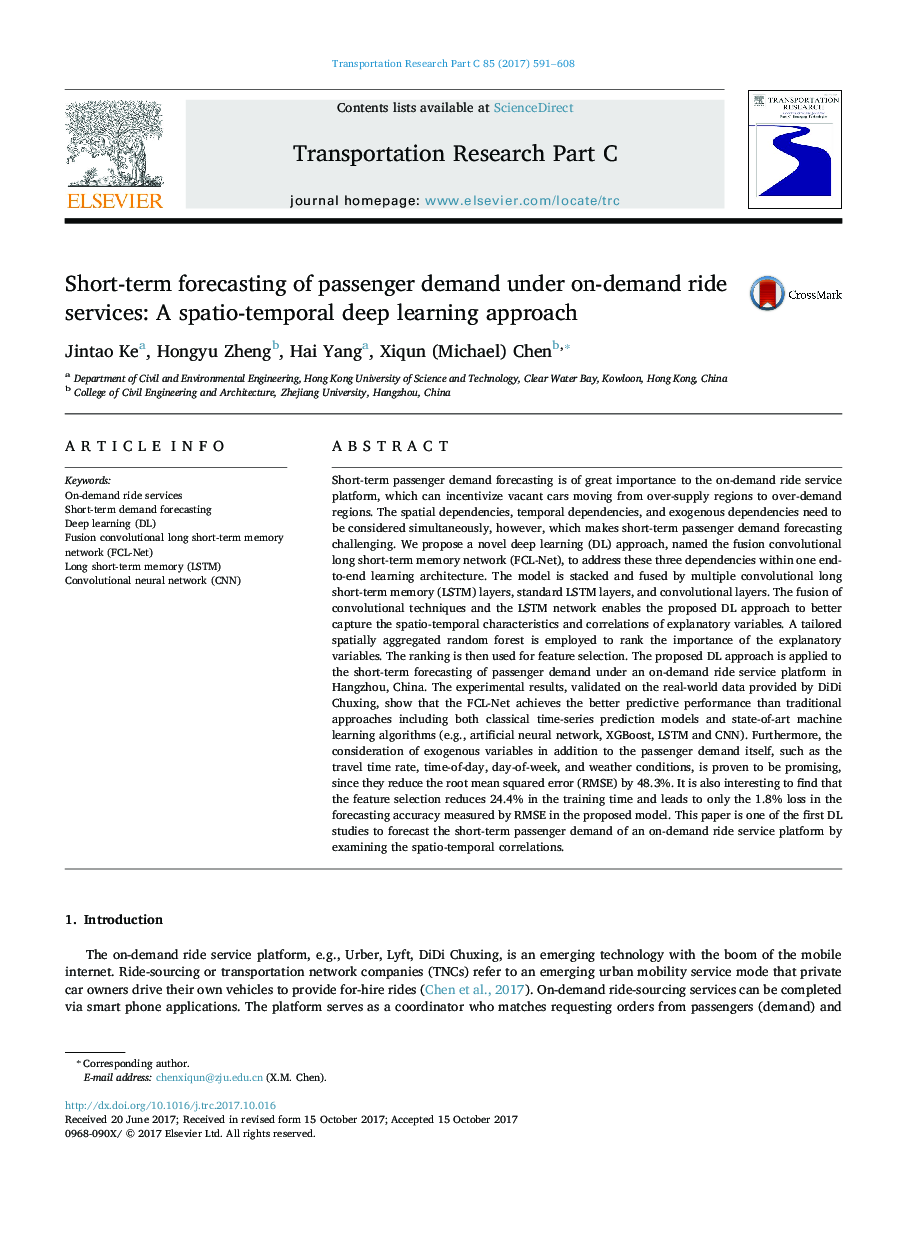| Article ID | Journal | Published Year | Pages | File Type |
|---|---|---|---|---|
| 6936314 | Transportation Research Part C: Emerging Technologies | 2017 | 18 Pages |
Abstract
Short-term passenger demand forecasting is of great importance to the on-demand ride service platform, which can incentivize vacant cars moving from over-supply regions to over-demand regions. The spatial dependencies, temporal dependencies, and exogenous dependencies need to be considered simultaneously, however, which makes short-term passenger demand forecasting challenging. We propose a novel deep learning (DL) approach, named the fusion convolutional long short-term memory network (FCL-Net), to address these three dependencies within one end-to-end learning architecture. The model is stacked and fused by multiple convolutional long short-term memory (LSTM) layers, standard LSTM layers, and convolutional layers. The fusion of convolutional techniques and the LSTM network enables the proposed DL approach to better capture the spatio-temporal characteristics and correlations of explanatory variables. A tailored spatially aggregated random forest is employed to rank the importance of the explanatory variables. The ranking is then used for feature selection. The proposed DL approach is applied to the short-term forecasting of passenger demand under an on-demand ride service platform in Hangzhou, China. The experimental results, validated on the real-world data provided by DiDi Chuxing, show that the FCL-Net achieves the better predictive performance than traditional approaches including both classical time-series prediction models and state-of-art machine learning algorithms (e.g., artificial neural network, XGBoost, LSTM and CNN). Furthermore, the consideration of exogenous variables in addition to the passenger demand itself, such as the travel time rate, time-of-day, day-of-week, and weather conditions, is proven to be promising, since they reduce the root mean squared error (RMSE) by 48.3%. It is also interesting to find that the feature selection reduces 24.4% in the training time and leads to only the 1.8% loss in the forecasting accuracy measured by RMSE in the proposed model. This paper is one of the first DL studies to forecast the short-term passenger demand of an on-demand ride service platform by examining the spatio-temporal correlations.
Related Topics
Physical Sciences and Engineering
Computer Science
Computer Science Applications
Authors
Jintao Ke, Hongyu Zheng, Hai Yang, Xiqun (Michael) Chen,
